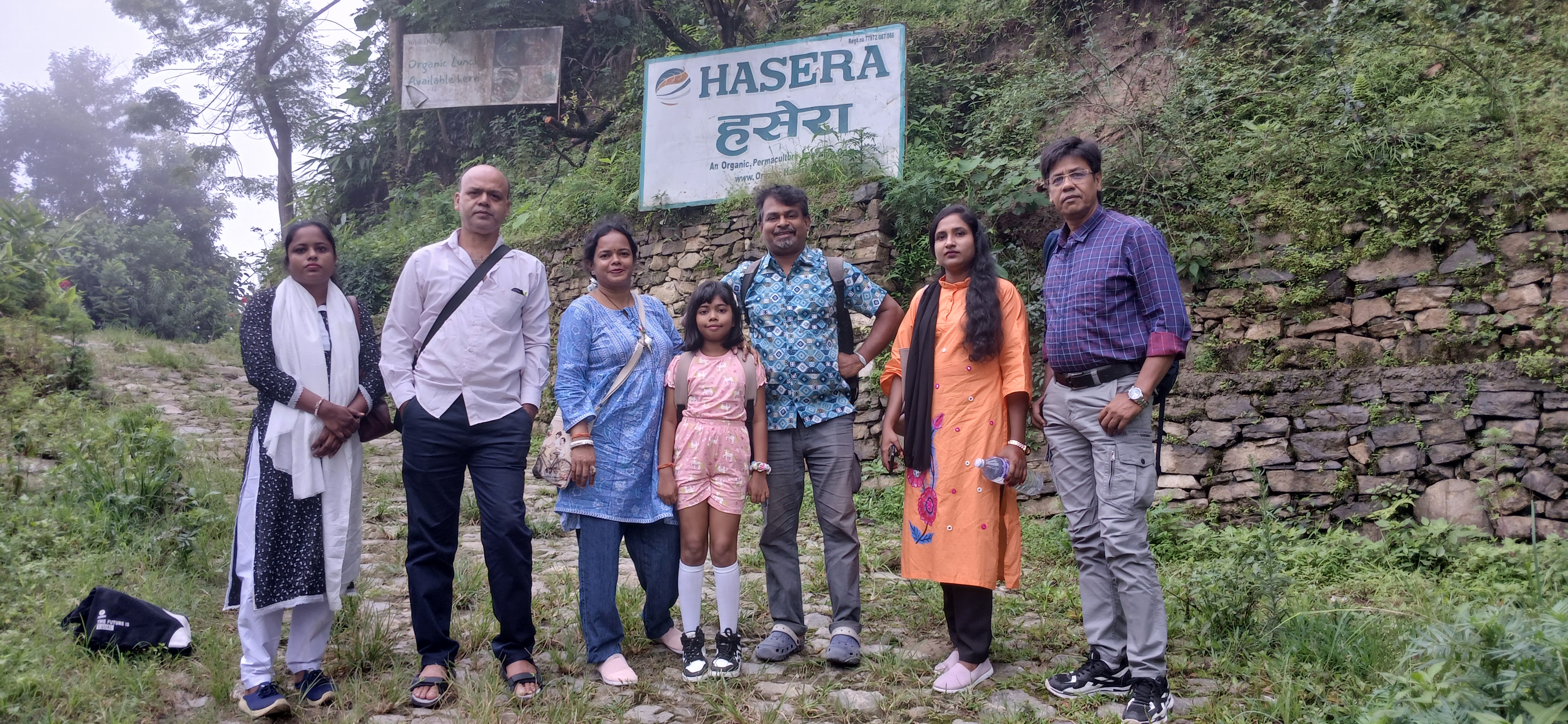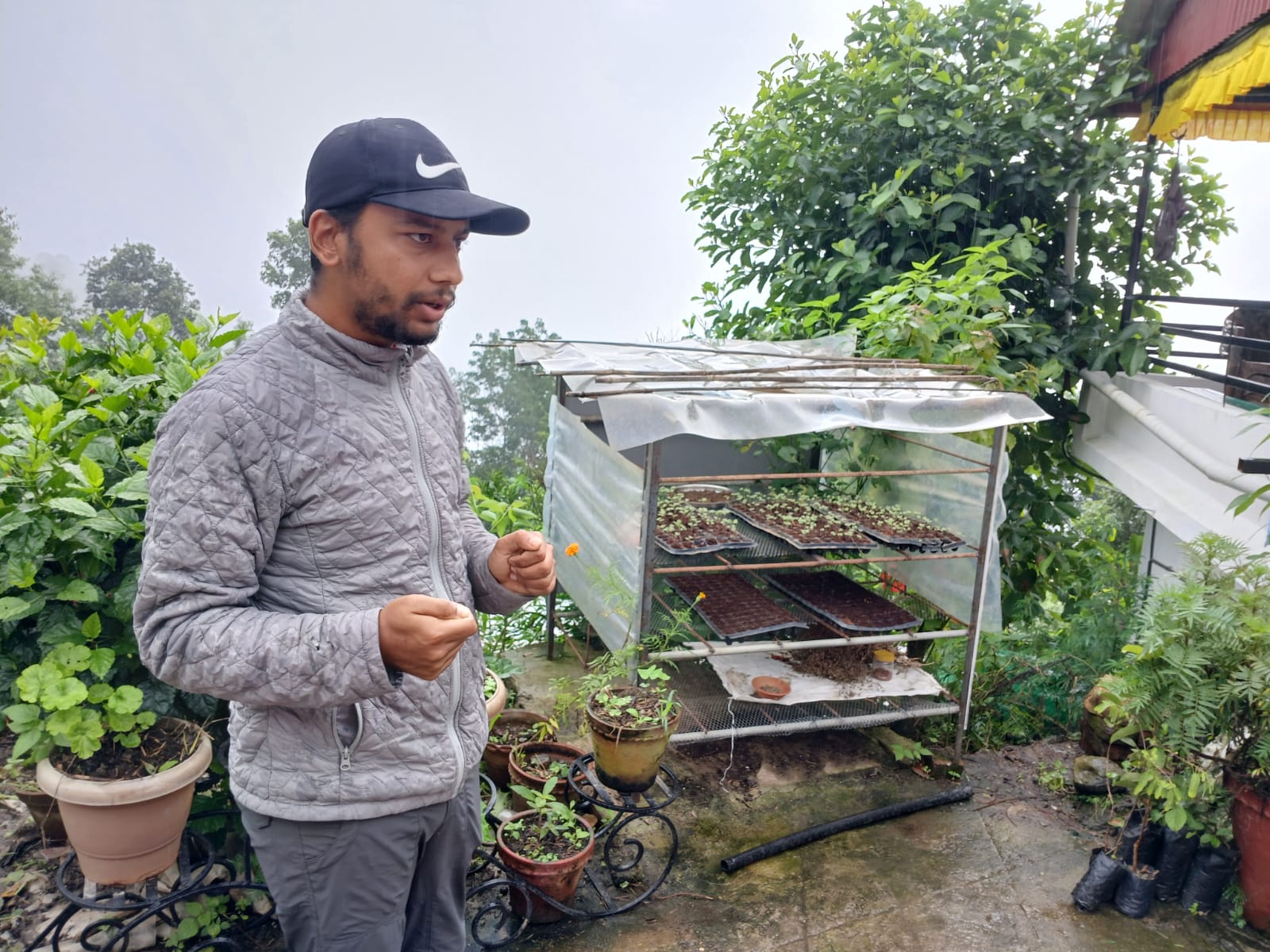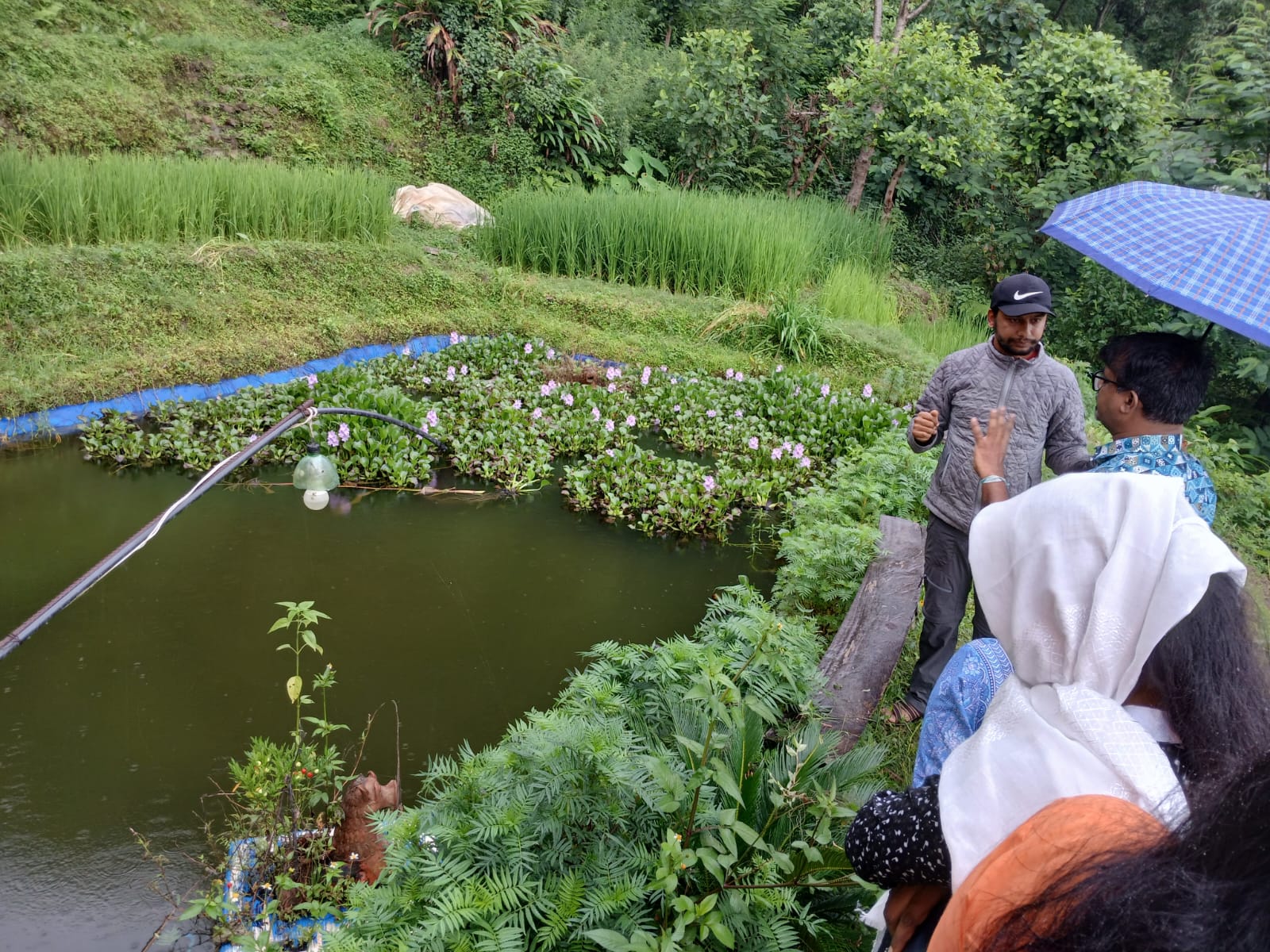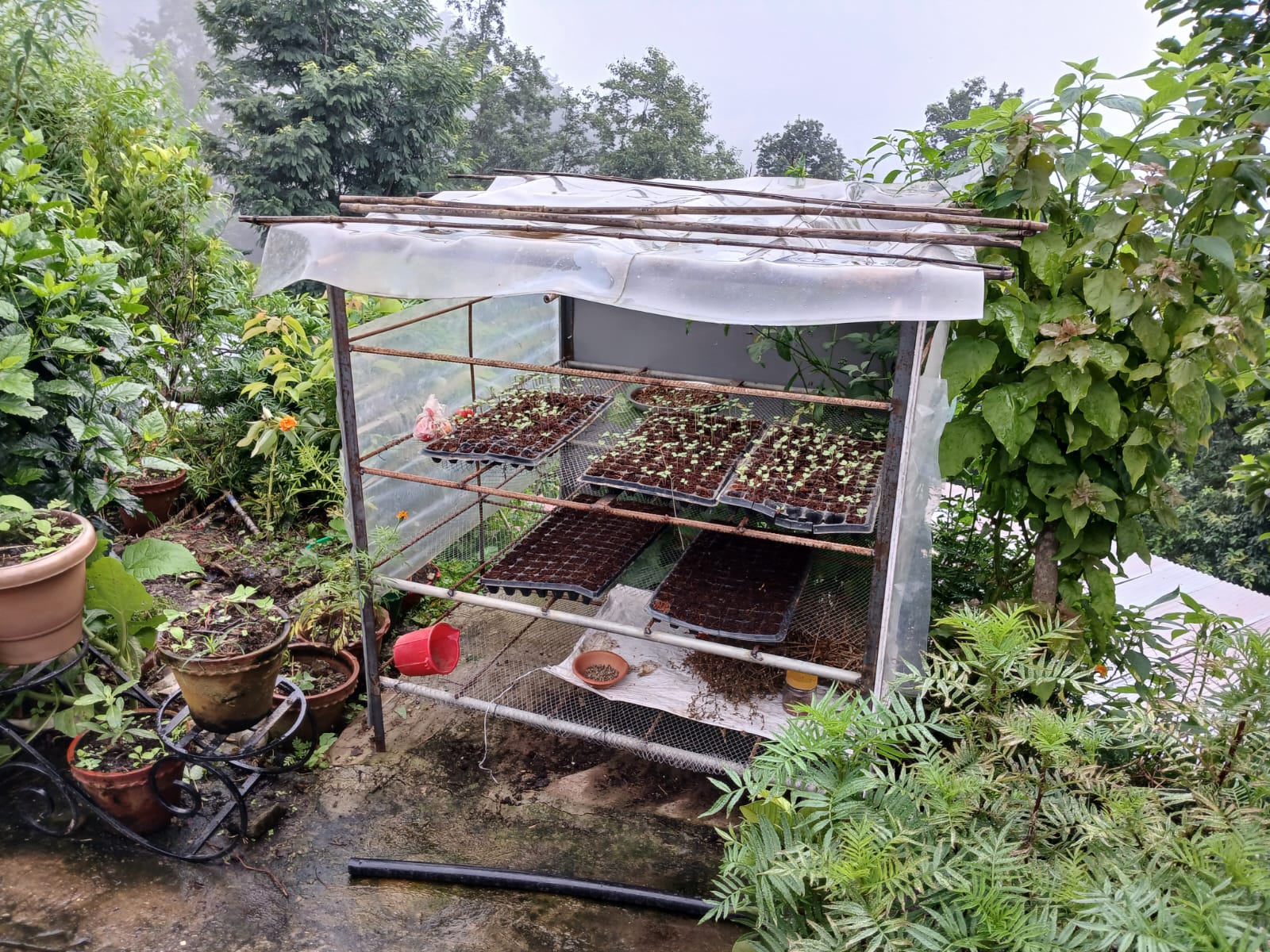By Shimul Biswas from Manikganj
Introduction
Today, agriculture is not merely a way to meet food demand; it is a holistic lifestyle and a foundation for protecting the environment. However, global climate change and the excessive use of chemical fertilizers and pesticides have placed agriculture under serious threat. In order to address these challenges, sustainable agricultural practices are gaining attention worldwide. One of these significant approaches is permaculture. It is not just a farming technique, but a philosophy of building a complete lifestyle in harmony with nature. It integrates food production, settlement, water management, energy use, and even social structures which could be considered one of the practices that advance agroecology.

With the aim to explore this approach firsthand, with the support of BARCIK, a seven-member team visited the HASERA Permaculture Learning Centre and farm near Kathmandu located in Nepal, on August 11, 2025. This visit offered not only a practical understanding of permaculture but also deeper insights into its philosophy, principles, and effectiveness.
HASERA Permaculture Centre: Living with Nature
Nestled in the green hills of Patalekhet, the HASERA Centre stands as a living classroom. It is not just a farm but a laboratory of sustainable agriculture and lifestyle. Director Mr. Vivek welcomed us warmly and shared the philosophy and practices behind his farm. The farm functions like a miniature ecosystem. Fruit trees, medicinal plants, livestock, poultry, fish, bees, water, light, air, and waste management and all are interconnected and interdependent. This reflects the core philosophy of permaculture.
The Core Principles of Permaculture
However, when interact with Mr. Vivek about the functions and core principles of permaculture he highlighted three key principles which include:
- Earth Care: Caring for soil, water, air, forests, and biodiversity.
- People Care: Ensuring food, shelter, health, and social security.
- Fair Share: Equitable distribution of resources and consumption.
Grounded in these principles, permaculture seeks sustainable solutions for food, water, energy, and housing, always following nature’s rules where nothing is wasted and everything is reused.
Field Observations: What We Learned
Through the field visit we observed and documented somethings that we can learn from it. Based on our observation in the field visit following things that we can learn from:
- Diverse Cropping: Multiple crops grown on the same land, reducing pests, improving soil fertility, and ensuring food security.
- Water Management: Rainwater harvesting and reuse, with small reservoirs to prevent runoff.
- Integration of Livestock: Cows, goats, poultry, and bees contributing to both food and soil fertility.
- Natural Pest Control: Using neem, chili, garlic, and cow urine mixtures; intercropping to prevent pest outbreaks.
- Waste Utilization: Kitchen waste composted, cow dung converted to fertilizer and biogas, pruned branches turned into organic matter.

Vivek’s shared his perspective saying, “We do not fight against nature; we coexist with it. If we follow nature’s rules, agriculture becomes simple, affordable, and sustainable”. He believes that while modern agriculture is degrading soil and ecosystems, permaculture revives farming and also provides new directions for social, cultural, and economic well-being.
Permaculture vs. Conventional Agriculture
Farmers in Bangladesh and South Asia face challenges such as:
- Overdependence on chemical fertilizers and pesticides
- Rising production costs
- Declining soil fertility
- Water scarcity
- Climate change impacts
Permaculture offers practical solutions:
- Maintaining soil fertility through natural means
- Risk reduction through mixed and diverse cropping
- Effective use of rainwater
- Application of indigenous knowledge and practices
- Moving farmers toward self-reliance
Permaculture in the Context of Bangladesh
As we observed the activities of the HASERA Permaculture Centre, it repeatedly struck us that this approach is highly applicable in Bangladesh as well. This can strengthen the agroecology practices that BARCIK is doing in its working areas. In many parts of Bangladesh, practices such as homestead gardening, multi-purpose gardens, rainwater harvesting, and integrating livestock and poultry with farming already exist. In fact, permaculture refines and organizes these traditions through a modern scientific perspective.

The Significance of Knowledge Exchange
Our visit did not only provide us an opportunity to learn something new but also created a bridge between local knowledge and international experiences. If Bangladeshi farmers adopt such sustainable agricultural practices, it could become a powerful tool not only for food security but also for environmental protection.

Conclusion
Permaculture has shown us that agriculture is not merely about growing crops in fields; it is a holistic way of life. It strengthens and contributes to advance agroecology by cooperating with nature, rather than fighting against it. This thus, can turn one of the solutions to climate change impacts. Through our visit to Nepal’s HASERA Permaculture Centre, we realized that this model is not only relevant to Nepal but also to Bangladesh and countries across the world.
